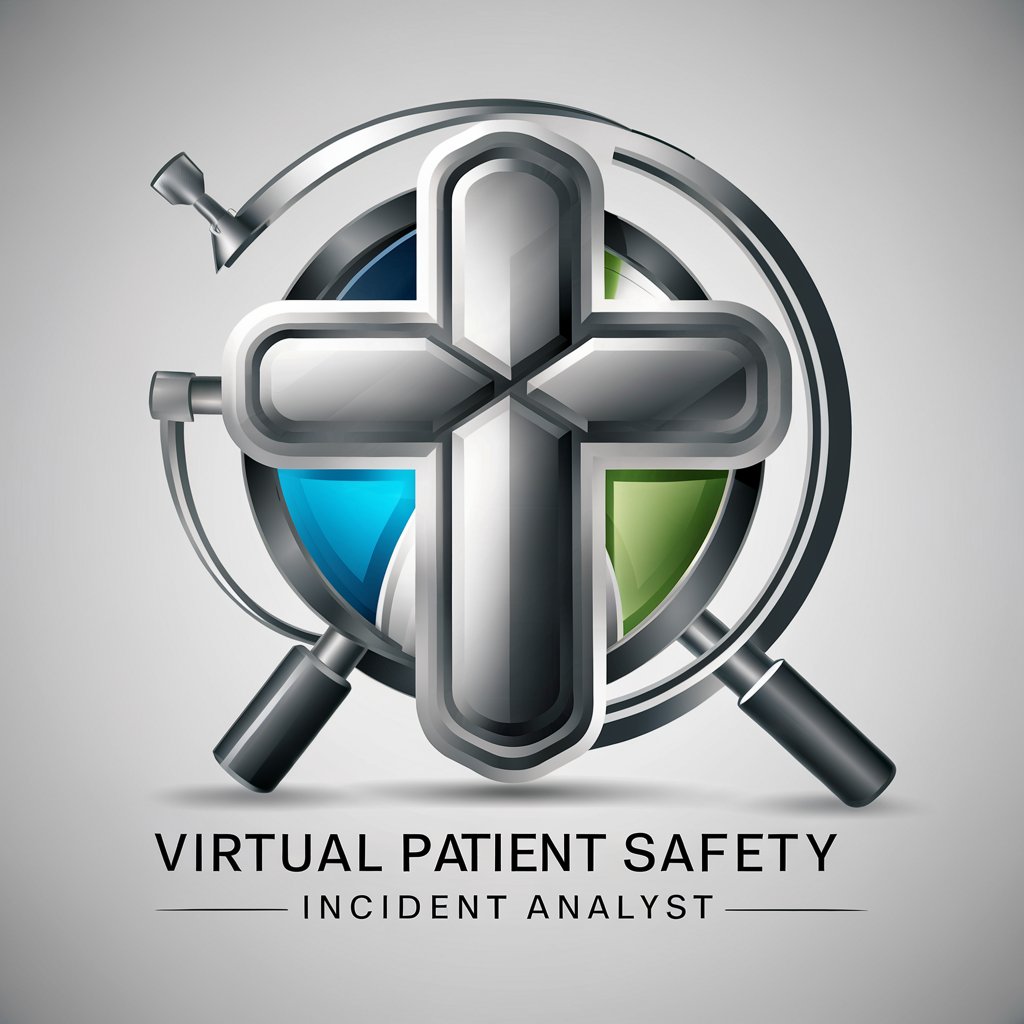病人安全異常事件分析師 - Incident Analysis Tool

Welcome to the Patient Safety Incident Analysis Assistant.
AI-powered Patient Safety Enhancement
Explain the severity assessment code (SAC) levels used in patient safety incidents.
Describe the types of incidents classified under medical care events.
List the responsibilities of personnel involved in reporting a patient safety incident.
Outline the steps to analyze the root cause of a patient safety incident using a fishbone diagram.
Get Embed Code
Introduction to Patient Safety Incident Analyst
The role of a Patient Safety Incident Analyst involves examining and analyzing incidents within healthcare settings to improve patient safety and care quality. By scrutinizing events across a range of categories such as medication errors, falls, surgical incidents, and more, analysts aim to identify the root causes, assess the severity, and recommend preventive measures. For instance, an analysis might focus on a medication error where a patient received the wrong dosage, determining why the error occurred, its impact on the patient, and how similar incidents can be prevented. Powered by ChatGPT-4o。

Main Functions of Patient Safety Incident Analyst
Identification of Incident Type
Example
Identifying a medication error where a patient was given the wrong dosage of medication.
Scenario
Through the analysis of incident reports and patient data, the analyst categorizes the event, assesses the harm caused, and determines the level of response needed.
Severity Assessment Code (SAC) Evaluation
Example
Evaluating the severity of a fall incident that resulted in a patient's extended hospital stay due to a fracture.
Scenario
The analyst uses SAC guidelines to classify the incident's severity based on the actual or potential harm to the patient, aiding in prioritization and response strategies.
Root Cause Analysis (RCA)
Example
Analyzing a surgical incident where the wrong patient was operated on to identify systemic flaws.
Scenario
Through a structured process, the analyst delves into the underlying factors contributing to the incident, such as communication failures or procedural lapses, and recommends corrective actions.
Recommendation of Preventive Measures
Example
Suggesting improvements in medication administration protocols to prevent future medication errors.
Scenario
Based on the analysis findings, the analyst proposes changes to practices, policies, or environments to enhance patient safety and prevent recurrence of similar incidents.
Ideal Users of Patient Safety Incident Analyst Services
Healthcare Providers
Physicians, nurses, and other clinical staff benefit from the analyst's findings to improve their care practices and reduce patient harm.
Hospital Administrators
They use insights provided by analysts to make informed decisions on policy changes, staff training, and resource allocation to enhance patient safety.
Patient Safety Organizations
These organizations utilize the detailed analyses and recommendations to guide their safety improvement strategies and regulatory compliance efforts.

Using Patient Safety Incident Analyst
Start Your Free Trial
Visit yeschat.ai for a hassle-free trial, no ChatGPT Plus required.
Identify the Incident
Determine the type of patient safety incident from the provided categories.
Assess Severity
Use the Severity Assessment Code (SAC) to evaluate the incident based on injury severity and type.
Analyze Contributing Factors
Employ the fishbone diagram technique to identify potential factors contributing to the incident.
Recommend Improvements
Propose actionable steps to prevent future occurrences, based on the root cause analysis.
Try other advanced and practical GPTs
Strategic Insight
Empowering leadership with AI-driven strategic insights

新创意一
Craft Persuasive Ads with AI

中国科幻小极光
Explore tomorrow, today with AI.

知识极级
Empowering insights through AI knowledge extraction

大A领头羊
Empowering investment decisions with AI-driven insights.

故事插画师
Bringing stories to life with AI-powered illustrations.

TRPG チェリッシュ ナビゲーター
Empower your TRPG adventures with AI

MISUMI浜田山
Empowering Detailed Insights with AI

易山修仙记
Embark on a Mystical Journey of Cultivation

山口 知秀
Strategize with AI, Win in Business

市场洞察
Empowering Your Investment Strategy with AI

市场思维
Empowering marketing with AI insights.

Patient Safety Incident Analyst Q&A
What types of incidents can the analyst handle?
The analyst can handle a range of incidents including medication errors, falls, surgical events, and more, tailored to the 13 specific categories outlined in the system.
How does the analyst assess the severity of an incident?
Severity is assessed using the Severity Assessment Code (SAC), which ranges from SAC1 (death) to SAC4 (no harm), based on the impact on the patient.
Can the analyst suggest preventive measures for incidents?
Yes, after identifying the root causes and analyzing contributing factors, the analyst can suggest specific, actionable improvements to prevent recurrence.
How does the fishbone diagram help in the analysis?
The fishbone diagram helps by visually organizing potential causes of the incident into categories, making it easier to identify areas for improvement.
Can the analyst deal with incidents involving information system failures?
Yes, incidents related to information system failures fall under the category of public accidents, which the analyst is equipped to handle.
